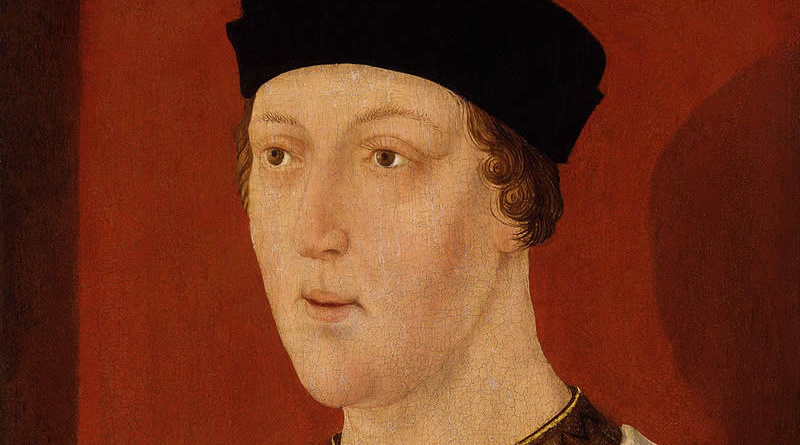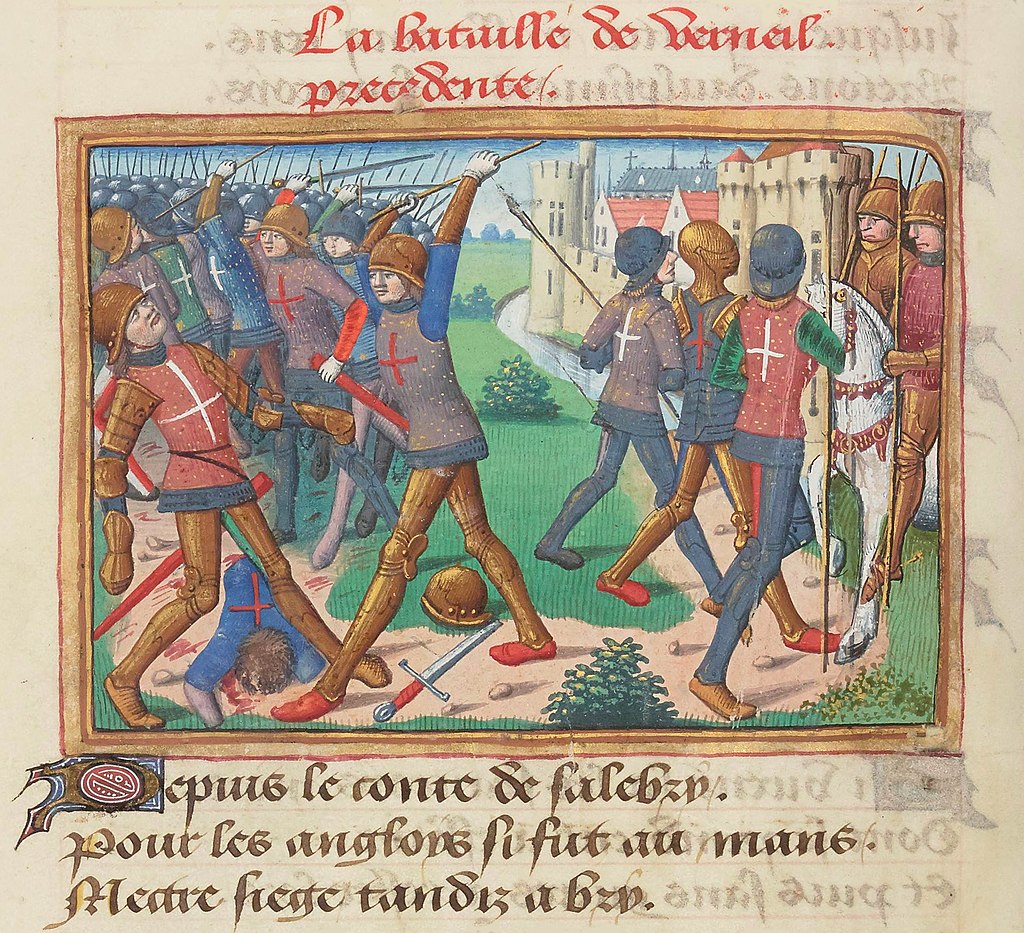Henry VI – Part One
Clash of the Men-at-Arms
The French men-at-arms, believing that victory was within their grasp, led a charge. Their opponents, now in good order, met them and a ferocious hand-to-hand battle ensued. For nearly an hour the French and their allies fought the English at close quarters and one of those present said the field was covered in blood. Duke John, wielding a poleaxe, fought alongside his men.
English Archers regroup
The archers, whose formations had been broken by the initial charge of the Milanese, had now come together again and launched volleys of arrows at the enemy. The French front line started to waver and then broke. Many combatants were chased back to Verneuil, where some drowned in the moat below the walls and others, including all the French commanders, were cut down.
Remaining Scots defeated
Those amongst the English who had finished off the fleeing French were called back to the battlefield. The Earl of Salisbury and his men were still at grips with the Scots, which was the only contingent still fighting. Duke John attacked from the left flank with his men shouting “Clarence, Clarence” (remembering Duke Thomas killed at Bauge) and the Scots were eventually surrounded. A few wanted to surrender but most fought a ‘last stand’ and were cut down where they stood. The dead included both the commanders of the Scots: the Earl of Buchan and Lord Archibald Douglas. When the Milanese cavalry returned to do battle they discovered it had already been won by the English. After losing only a few men they were driven off.
Second Agincourt?
Though sometimes referred to as a second Agincourt, this description certainly does not fit. The English loss of life at Agincourt was minimal and the crushing victory gained there was swift. The battle at Verneuil started badly for the English, lasted longer and had it not for the skilful leadership of Duke John it could have turned into a rout. The Allied-French losses amounted to 6,000-8,000, of which the majority would be Scots. English losses were estimated at 1,600, which is much higher than at Agincourt.
After the defeat at Verneuil the Dauphin, who had been planning to be crowned at Reims, was forced to postpone indefinitely his coronation. Duke John returned in triumph to Paris (then under Burgundian control), where he received a rapturous welcome.


